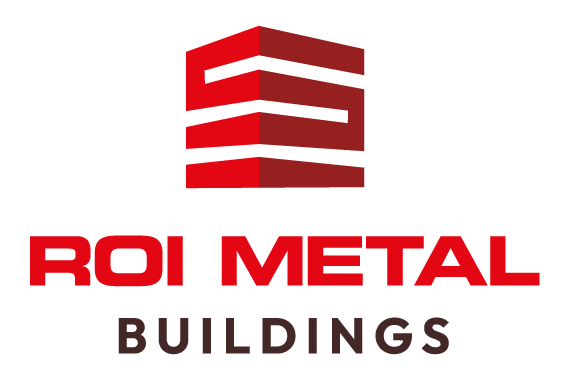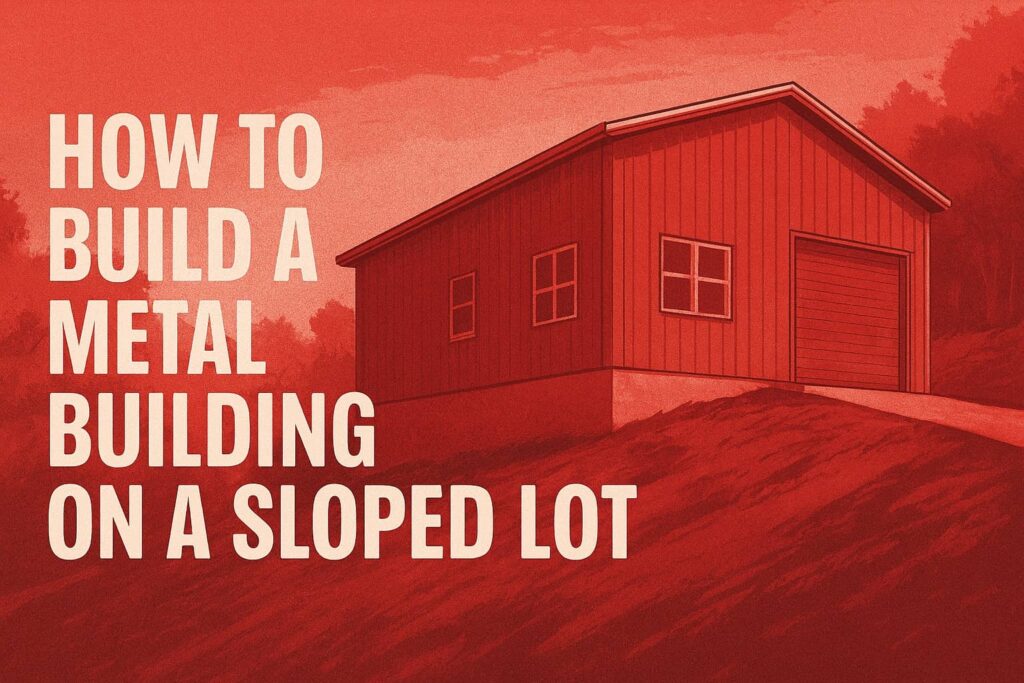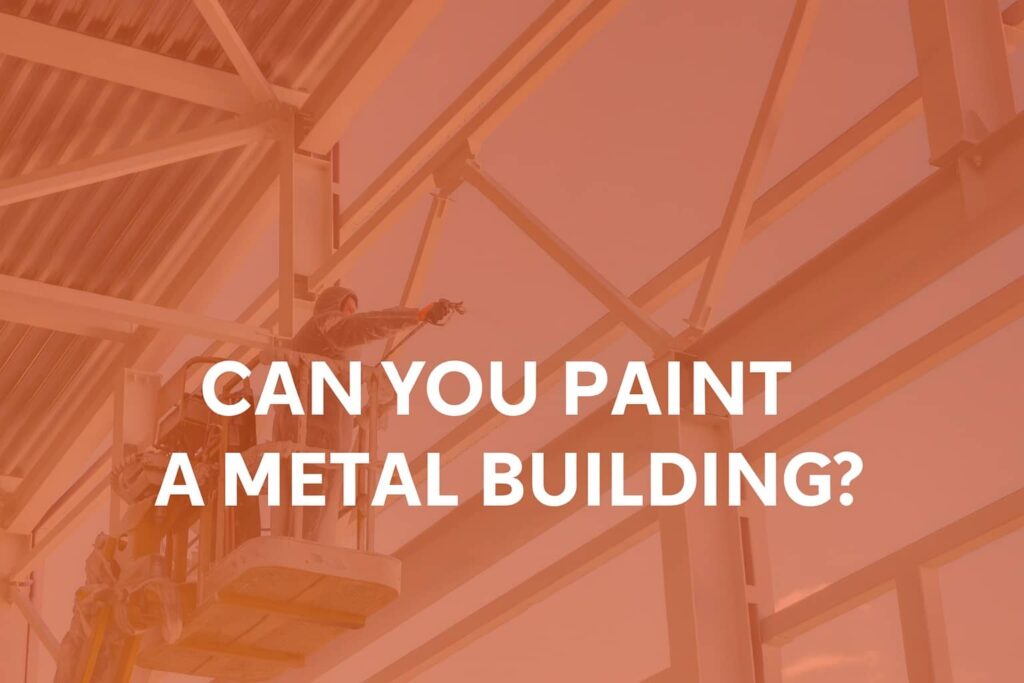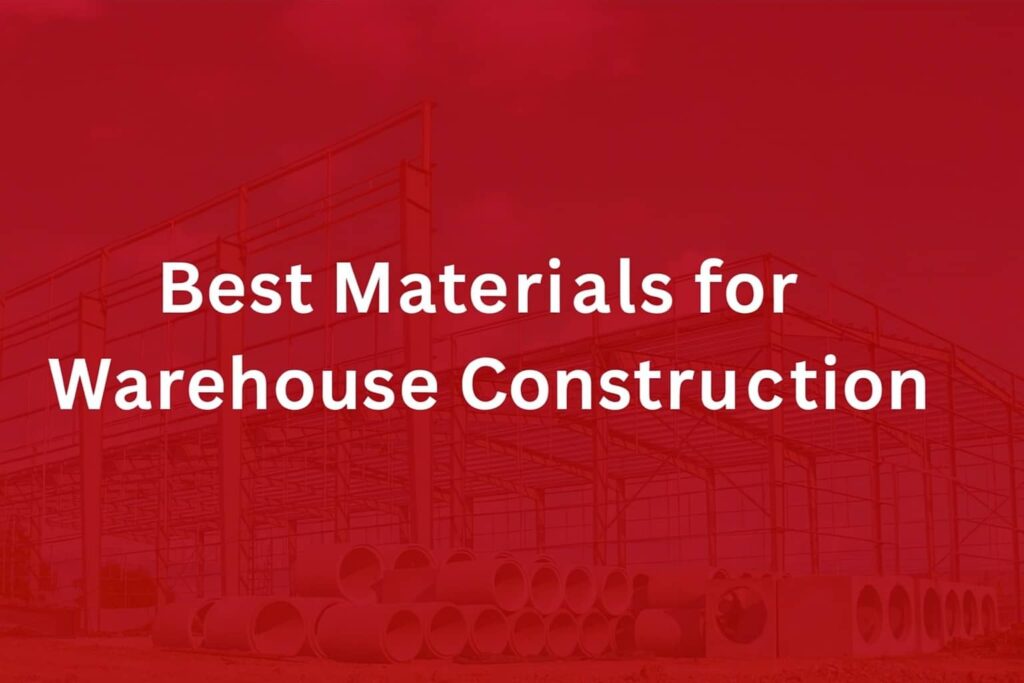Considering new investment opportunities in real estate often means balancing potential returns against risks. One area gaining noticeable traction for its promising mix of profitability and reliability is investing in metal self-storage kits. These pre-engineered buildings offer an enticing proposition – minimal maintenance paired with robust durability. It’s easy to see why seasoned investors gravitate toward this option when one considers its efficiency and adaptability in meeting market demands.
The numbers speak volumes; industry reports highlight nearly 17% annual ROI over a nine-year span for those who invested in self-storage facilities. Imagine bypassing common headaches like termite damage or structural warping that plague traditional wooden structures. This reassurance sets the stage perfectly to explore what exactly goes into these innovative metal self-storage kits.
This article is the first of a series dedicated to mini-storage and self-storage. Stay tuned in the following weeks for more articles about mini-storage buildings. If you’re planning on starting a mini-storage business, make sure to check out our other articles for more great tips!
Investing in metal self-storage building kits presents a lucrative opportunity due to the high demand for storage space and the low maintenance nature of steel construction. Additionally, these structures offer a relatively quick ROI, making them an attractive investment choice for individuals seeking passive income streams.
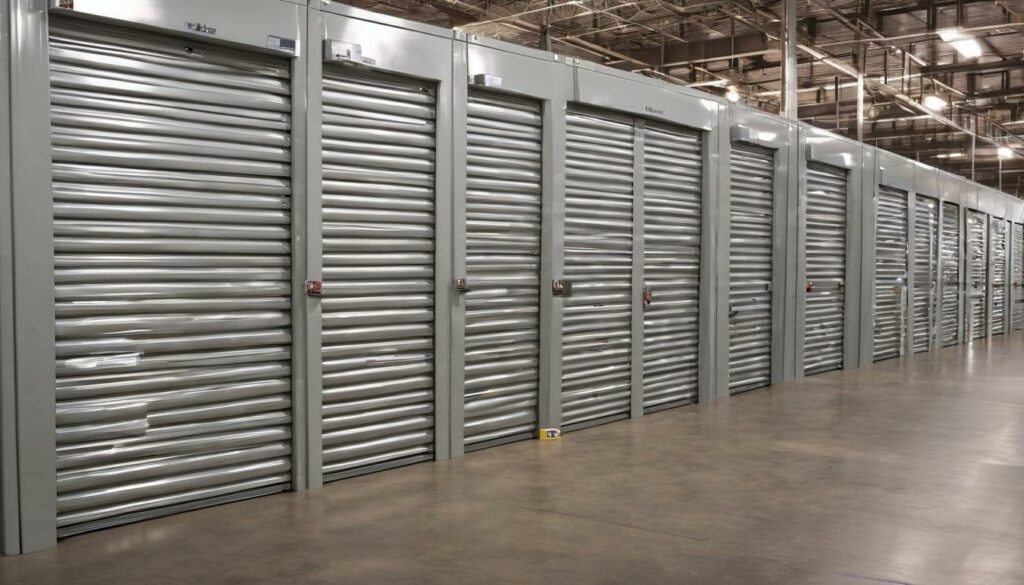
What is a Metal Self-Storage Kit?
Imagine a metal self-storage kit as a large-scale Lego set for adults, allowing you to construct your own storage units. These kits are meticulously crafted to include all the essential components needed to build durable and dependable self-storage facilities. The primary materials consist of steel panels, frames, and fasteners. The beauty of these kits lies in their simplicity and efficiency—everything required comes in one package, streamlining the construction process and eliminating hassle.
Furthermore, the kits also come with detailed assembly instructions, ensuring that even individuals with limited construction experience can assemble them without much difficulty. This is excellent news for those interested in becoming self-storage building owners but may not have extensive construction knowledge. With a metal self-storage kit, the process of getting your storage facility up and running becomes significantly more attainable.
These kits are highly customizable based on specific requirements and preferences. For instance, at ROI Metal Buildings, options for additional insulation or security features are available as part of the kit, allowing you to cater to varied climatic conditions and security concerns.
For example, living in an area with extreme temperatures means that having the option for additional insulation can significantly benefit the longevity of your storage units by shielding them from harsh weather conditions. On the other hand, prioritizing security for your clientele means incorporating enhanced security features to provide peace of mind about the safety of their belongings.
The flexibility offered by metal self-storage kits enables the creation of storage spaces customized to suit specific needs or niches within the market. Whether it’s creating units tailored for outdoor equipment storage or accommodating larger vehicles like boats or RVs, these kits allow for adaptability and versatility in design.
In essence, a metal self-storage kit provides a convenient and customizable solution for anyone looking to invest in or establish their own self-storage facility. From convenience and efficiency to adaptability and customization, these kits truly offer a comprehensive package for those entering the self-storage industry.
As we’ve explored the versatile nature of metal self-storage kits, let’s now dive into the myriad benefits of investing in these innovative solutions.
Benefits of Metal Self-Storage Investments
Investing in metal self-storage kits presents numerous advantages that make it a compelling investment option. Let’s break down each benefit and explore why these kits are becoming an increasingly lucrative real estate investment strategy.
Low Maintenance
One of the most appealing aspects of metal self-storage kits is their low maintenance requirement. When compared to traditional wooden structures, metal buildings are highly resistant to termites, rot, and warping. This innate durability means that ongoing maintenance costs are significantly reduced. The routine upkeep mainly involves occasional power washing and inspections, saving both time and money in the long run.
High Durability
Steel is renowned for being one of the most durable building materials available. This inherent strength makes metal self-storage units highly resistant to environmental wear and tear, including extreme weather conditions. The durability of metal buildings translates to longevity, ensuring that your investment stands the test of time with minimal need for repairs or structural maintenance.
Quick Construction
Another key advantage of metal self-storage kits is their quick construction process. Prefabrication allows for faster assembly compared to traditional construction methods, significantly reducing the time from investment to operational status. This attribute can make a substantial difference in generating revenue as the facility can be up and running in a shorter timeframe, accelerating the return on investment.
High Return on Investment
Historically, self-storage facilities have generated an impressive annual Return on Investment (ROI) of almost 17% over a nine-year span, as indicated by industry reports. Metal buildings contribute significantly to this profitability due to their lower maintenance costs and high durability. Moreover, they can be quickly modified or expanded to meet market demands, providing flexibility and adaptability to changing business needs. This adaptability allows investors to capitalize on emerging trends or adjust the facility’s configuration based on customer preferences, further enhancing the potential for a high ROI.
These distinctive benefits underscore the appeal and viability of metal self-storage investments as a lucrative real estate strategy. But let’s dive deeper into how these advantages stack up against more traditional real estate investments and why they make financial sense in the long term.
Types of Metal Storage Kits
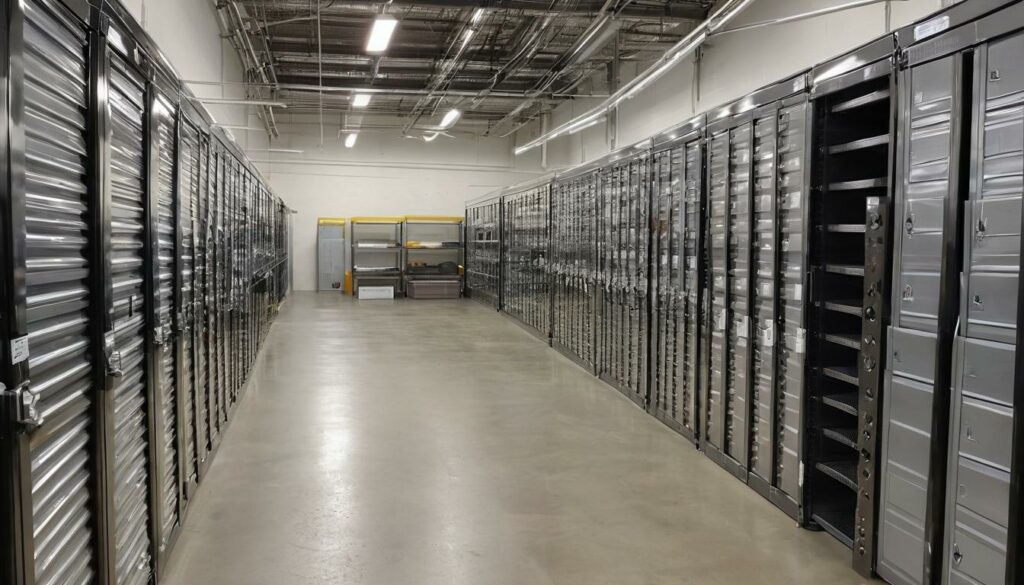
Metal storage kits come in a variety of options, each catering to different storage needs and niches. Here are some common types:
Standard Storage Units
Single-story standard storage units are the bread and butter of the self-storage industry. They serve a broad range of purposes, providing space for personal or commercial storage needs. These units are versatile and adaptable, making them essential for any type of storage facility.
Follow-up: Typically, these units are designed with simplicity in mind, offering a practical solution for individuals or small businesses looking for accessible, affordable storage space.
Climate-Controlled Units
Climate-controlled units provide an added layer of protection for stored items by maintaining a stable internal climate. These kits are equipped with additional insulation and HVAC systems to regulate temperature and humidity, making them perfect for storing sensitive items such as antiques, documents, or electronic equipment.
Follow-up: While they may require a higher initial investment, climate-controlled units offer a unique selling point for self-storage operators and cater to customers with specific storage needs.
RV and Boat Storage
For owners of recreational vehicles and boats, specialized storage kits with high ceilings and wide entryways are essential. These larger kits are designed to accommodate bulky items and provide ample space for maneuvering in and out.
Follow-up: Due to the increasing popularity of outdoor recreation activities, there is a growing demand for dedicated storage solutions for RVs and boats. Investing in these specialized kits can yield attractive returns.
Customizable Kits
Some suppliers offer customizable kits that allow for flexibility in size, layout, and features. These kits can be tailored to attract specific demographics or cater to niche markets by incorporating partition walls, unique security systems, or specialized amenities.
Follow-up: Customizable kits provide investors with the opportunity to adapt their storage facility to the evolving needs of their customers, ensuring high occupancy rates and maximizing rental income.
Understanding the different types of metal storage kits is crucial for investors seeking to optimize their self-storage facilities. By diversifying the offerings within a facility, operators can appeal to a broader customer base and capitalize on niche market segments within the self-storage industry.
As we further explore the world of self-storage investments, let’s now pivot our focus towards understanding the sourcing and suppliers that play a vital role in this lucrative real estate venture.
Sourcing and Suppliers
Investing in metal self-storage kits begins with selecting the right supplier. It’s crucial to collaborate with reputable suppliers who offer comprehensive customer support and quality assurances. Websites like ROI Metal Buildings can provide a wide range of options, ranging from small independent suppliers to large companies, ensuring you have the flexibility to make the best choice for your business.
When evaluating potential suppliers, it’s important to consider both local and national options. Local suppliers may offer lower shipping costs and quicker delivery times, beneficial if you’re looking to kickstart your project swiftly. On the other hand, national suppliers might provide better customization options or more competitive pricing due to their larger scale and resources.
For example, a local supplier could be more familiar with local building codes and regulations, potentially saving you time and money when obtaining permits. However, a national supplier might offer a wider range of design options catering to specific requirements for different types of self-storage units such as boat or RV storage facilities.
Additionally, it’s vital to ensure that the supplier uses high-grade steel in their kits to guarantee durability and longevity. This kind of information is often found in customer testimonials and case studies. Real-life experiences from previous clients provide valuable insights into a supplier’s reliability and the quality of their products.
It’s always wise to research before making any decisions. Don’t hesitate to reach out to previous clients if possible, as firsthand accounts can provide valuable information prior to investing significant amounts of money into your project.
In the next section, we will explore the financing aspect of investing in metal self-storage kits and uncover various funding opportunities available for potential investors in this lucrative real estate strategy.
Assembly and Maintenance Guide
Assembling a metal self-storage building is a pivotal step in transforming your investment into a profitable asset. Whether you plan to build one or multiple storage units, ensuring the proper assembly and regular maintenance of these structures will guarantee their longevity and functionality. Let’s break down each step to ensure a clear understanding.
Step I – Preparing the Site
Before you begin assembling the components, it’s crucial to ensure that the ground is level and free from debris. A solid foundation is key, making a concrete slab highly recommended. This not only provides stability but also ensures that the contents inside are protected from moisture and pests.
To ensure the site is adequately prepared, involve experts to survey the land and provide guidance on necessary improvements. Taking the time to address this crucial step sets your metal self-storage building up for long-term success.
Step II – Assembling the Frame
The steel frame is the skeleton of your self-storage building, providing strength, support, and durability. Carefully assemble the steel frame according to the prefabricated sections, paying attention to detail and ensuring every connection is secure and aligned properly based on the supplier’s instruction manual.
Properly assembling the frame is essential for ensuring that your metal self-storage building stands strong and secure against external elements.
Step III – Attaching Panels
Once the frame is assembled, attach the steel panels using specified fasteners to securely affix them to the frame, ensuring that all seams are properly sealed. This step is vital for preventing moisture infiltration, maintaining a controlled climate inside the building, and safeguarding stored items from environmental damage.
Imagine your metal self-storage building as a safe haven for people’s belongings; securing the panels is akin to locking all doors tightly to prevent unwanted intrusions or damages.
Step IV – Final Touches
After attaching the panels, it’s time for final touches, including installing additional features such as insulation or security systems if needed. Perform a thorough inspection of the entire structure to ensure its structural integrity before opening it up for use.
Performing a comprehensive inspection will help catch any potential issues early on, allowing for timely solutions that maintain your building’s reliability and safety.
Maintenance Tips
Regular maintenance is crucial for preserving your investment in metal self-storage buildings. Conduct periodic inspections to check for signs of rust, loose fasteners, or any structural issues. Cleaning the exterior using a power washer can help maintain its appearance and remove dirt buildup. Create a recurring maintenance schedule aligned with industry recommendations to ensure your metal self-storage building remains in top condition throughout its lifespan.
By understanding each step in assembly and embracing regular maintenance practices, you’re not only securing your investment but also maximizing its long-term profitability potential.
These meticulous steps in assembly and maintenance play an integral role in safeguarding your real estate investment while ensuring its continued income-generating potential. Now, let’s turn our attention to exploring financial considerations and maximizing return on investment (ROI).
Financial Considerations and ROI
Investing in metal self-storage kits involves several financial considerations that can significantly impact your returns. The upfront costs of purchasing a metal self-storage kit can vary widely, typically ranging from $10,000 to $100,000 depending on the size and level of customization required. It’s essential to carefully evaluate your initial capital investment, factoring in construction costs, land acquisition, permits, and any additional features or upgrades.
Exploring financing options is crucial in managing these initial expenditures. Small Business Administration (SBA) loans, conventional bank loans, and United States Department of Agriculture (USDA) loans are common avenues for funding these projects. Understanding the terms, interest rates, and repayment schedules of these financing options is key for making informed decisions about how to fund your self-storage facility’s development.
Financing Options
| Financing Option | Key Considerations |
|---|---|
| SBA Loans | Lower down payment and longer repayment terms |
| Conventional Bank Loans | Competitive interest rates and varied terms |
| USDA Loans | Targeted towards rural development projects |
While the initial investment may seem significant, it’s essential to analyze the potential revenue opportunities that come with owning a self-storage facility. By charging an average monthly rate of $90 per unit, clientele growth can facilitate the swift recovery of your initial investment. This is particularly true if your facility maintains high occupancy rates, which speaks volumes about its income-generating potential.
Revenue Opportunities
Utilizing customizable metal self-storage buildings to attract specific demographics—such as boat or RV owners—and strategically pricing and promoting your units can foster high demand and occupancy rates. Combine this with diligent management practices, and you’ll see a return on your investment sooner rather than later.
Consider a customer from ROI Metal Buildings who reported a full Return on Investment (ROI) within 24 months due to a strategic location and consistent demand. This is solid evidence that underscores the immense income potential of investing in metal self-storage kits when leveraged effectively.
Understanding the financial implications of investing in metal self-storage kits is pivotal for devising a comprehensive strategy that maximizes returns while minimizing risk. By weighing the upfront costs against projected revenue opportunities and learning from successful case studies, you can set yourself up for long-term success in this flourishing sector of real estate investment.
With a solid grasp of the financial aspects comes the understanding of long-term profitability and market trends in the realm of metal self-storage investments.
Long-term Profitability and Market Trends
Investing in metal self-storage kits offers promising prospects for long-term profitability and stability. The growing need for storage space is not only consistent but also recession-resistant. Nearly 10% of American households currently rent storage units, highlighting sustained demand and creating a favorable market environment for investors in the self-storage sector.
Furthermore, metal storage units offer unparalleled flexibility. Their modular design allows for easy reconfiguration or expansion, enabling investors to adapt to changing market trends and demands effectively. Whether it’s adjusting unit sizes, adding climate-controlled options, or creating innovative storage solutions, the flexibility of metal self-storage kits provides a competitive edge in meeting diverse customer needs.
Moreover, the economic resilience of the self-storage industry has been well-documented. During economic downturns, this industry has shown robust stability, with reports indicating consistently high occupancy rates even amidst recessions. This resilience demonstrates that investing in metal self-storage kits aligns with a sector that can weather economic fluctuations and continue to generate reliable returns on investment.
For instance, during recent economic downturns, the self-storage sector showcased its ability to maintain high occupancy rates and continued demand despite broader economic challenges. This persistence underlines the industry’s resilience and its potential to provide stable long-term profits for investors.
As we look toward the future, emerging trends such as remote management technology and eco-friendly construction materials are increasingly shaping the landscape of the self-storage industry. These trends present exciting opportunities for investors looking to stay ahead of the curve in this lucrative real estate investment strategy.
Considering the promising future outlook and the resilience of the self-storage industry, investing in metal self-storage kits proves to be a prudent and lucrative real estate investment strategy. Embracing these evolving trends could position investors for long-term success in this thriving market.
Strategies for Investing In Metal Self-Storage Kits
In conclusion, if you’re ready to start investing in metal self-storage kits for your facility, check out our wide range of options and find the one that best suits your needs by contacting us on this site. Or, if you’d prefer, call us directly at (865) 316-9009 to get started! Also, if you like our content and want to stay up to date, follow us on Facebook at https://www.facebook.com/roimetalbuildings!
